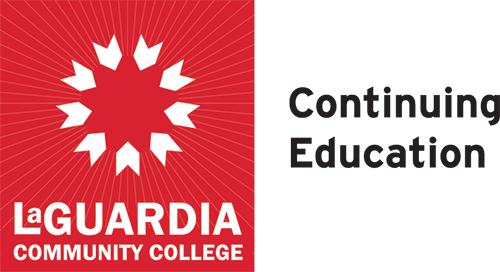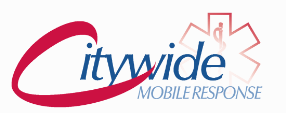EMT’s—become a Paramedic and earn higher pay while expanding your knowledge, skills and job opportunities in this high demand field.
Since 1996, the Paramedic Program at LaGuardia has educated and trained many of New York City’s finest Paramedics.
- Choice of one year certificate or two year AAS degree*
- Excellent reputation within the New York City EMS community.
- Excellent pass rates on the NY State Department of Health and New York City Regional Emergency Medical Advisory Committee (NYC REMAC) paramedic certification exams.
- State Exam Pass Rate (2023): 96.4%
Retention Rate (2023): 62.3%
Positive Job Placement Rate (2023): 94.7%
-
- Affordable tuition and available payment programs.
- State of the art equipment and EMS labs.
- Knowledgeable, experienced and caring faculty.
- Innovative skills training and comprehensive curriculum.
- National, state and regional certification for Paramedic.
- Convenient access to mass transit and major highways.
- Clinical rotations in Manhattan, Queens, Bronx, Brooklyn and beyond.
Certificate Program students attend classes together with degree students and fulfill all of the same didactic and practical skills as well as clinical requirements as degree students.
The major differences are:
- Certificate students are not required to take:
- the college placement exams or any basic skills classes.
- Human Anatomy I and II classes prior to taking the Paramedic course.
- Certificate students achieve their certification in one year instead of two years for the AAS Degree.
- Certificate students are not required to take:
-
- Certificate students may earn an AAS Degree when they return to LaGuardia to take the additional required courses. Returning students will be granted 36 credits for their EMT and Paramedic training and, upon completion of an additional 24 credits, can complete their AAS Degree.
- Certificate students do not benefit from CUNY tuition rates, nor are they eligible for the financial aid given only to degree students, such as the Tuition Assistance Program (TAP) and Federal Pell Grants.
Students who successfully complete the Paramedic Original program qualify to take the initial New York City Regional Emergency Medical Advisory Committee (NYC REMAC) paramedic certification exam at no cost.
Partial tuition scholarships are available for eligible students. A separate application process is required. Contact program staff for more information.
COURSES
Paramedic Original
Location: C330
Weekday: Tuesday,Thursday,Sunday
Time: –
Fee: $10900
Course Code: PMED100F25.T11.01.00
Information and Prescreening Session for Paramedic Program
Certified EMTs are invited to learn about LaGuardia's Paramedic Program and requirements for NY State Department of Health Paramedic Certification.
Explore the broader career and educational opportunities in the healthcare field for advanced level EMS providers.
Take the program screening exams (reading, EMT Knowledge, and math).
Location: C330
Weekday: Tuesday
Time: 01:00 PM – 05:00 PM
Fee: $0
Course Code: PMED000U25.T11.01.00
Location: C330
Weekday: Tuesday
Time: 01:00 PM – 05:00 PM
Fee: $0
Course Code: PMED000U25.T11.02.00
Location: C330
Weekday: Monday
Time: 02:00 PM – 06:00 PM
Fee: $0
Course Code: PMED000U25.T11.03.00
Location: C330
Weekday: Wednesday
Time: 06:30 PM – 10:30 PM
Fee: $0
Course Code: PMED000U25.T11.04.00
Location: C330
Weekday: Saturday
Time: 09:30 AM – 01:30 PM
Fee: $0
Course Code: PMED000U25.T11.05.00
Location: C330
Weekday: Tuesday
Time: 03:00 PM – 07:00 PM
Fee: $0
Course Code: PMED000U25.T11.06.00
Additional Emergency Medical Services (EMS) Courses
REQUIREMENTS
- High school diploma or equivalent
- Passing of pre-screening process
- NY State certified EMT
CAREER PROFILE
Paramedics primarily perform ambulance transport and emergency response work as well as hyperbaric medicine and telemedicine, earning $23 – $40/hour. With additional training, you can also perform flight medicine and administer critical care and neonatal transport.
This profession has excellent employment opportunities. You can also advance to the role of supervisor, instructor, nurse, physician assistant or doctor.
RELATED PROGRAMS
FAQ
Both EMTs and Paramedics render emergency care to the ill and injured in the pre-hospital environment. However, EMTs are trained to offer a basic level of care, and Paramedics offer an advanced level of care. Paramedics must be certified as EMTs before beginning Paramedic training.
EMTs perform skills such as CPR, defibrillation, bandaging and splinting, spinal immobilization, oxygen therapy, lifting and moving techniques, vital signs, patient assessment and histories, emergency childbirth, treatment of medical and environmental emergencies, and more.
Paramedics do all of the above, plus they can start IVs, administer many potent emergency drugs, perform endotracheal intubation, give injections, perform transcutaneous pacing and cardio version, read EKGs, and perform many invasive techniques, such as needle decompression of a lung and cricothyroidotomy.
- High school diploma or equivalent
- Passing of pre-screening process
- NY State certified EMT
We have rotation sites across many hospitals and EMS providers in Manhattan, Bronx, Queens, Brooklyn, Westchester, Nassau and Rockland counties.
Absolutely! The AAS Paramedic Degree option is encouraged as a way of increasing your professional options during your career. Paramedic coursework can be applied toward an AAS at LaGuardia by simply completing the standard college application process and taking one additional course at LaGuardia.
Currently there is a shortage of Paramedics in New York City, making employment prospects excellent. The Fire Department of New York, hospitals and private companies have been actively recruiting on campus. LaGuardia graduates are sought after by many employers.
LaGuardia has the best preparation for the best price. Our Paramedic Program has had a 100% pass rate FOR STUDENTS TAKING the NY State Department of Health exam for more than 12 years. Dedicated EMS labs, top notch faculty, a minicomputer lab, and a multitude of resources, including open skills labs and state of the art equipment, are all available to students. We’ll do our best to make sure you succeed!
EMPLOYER PARTNERS

Contact Us
Pre-Hospital Care Programs
Phone
(718) 482-5768

Register
To apply to the Paramedic Original course, you will need to register and attend an information session. Click here to create a profile and choose Information and Prescreening Session for Paramedic Program. If you pass a pre-test and interview you will be invited to register for the Paramedic Original program.













